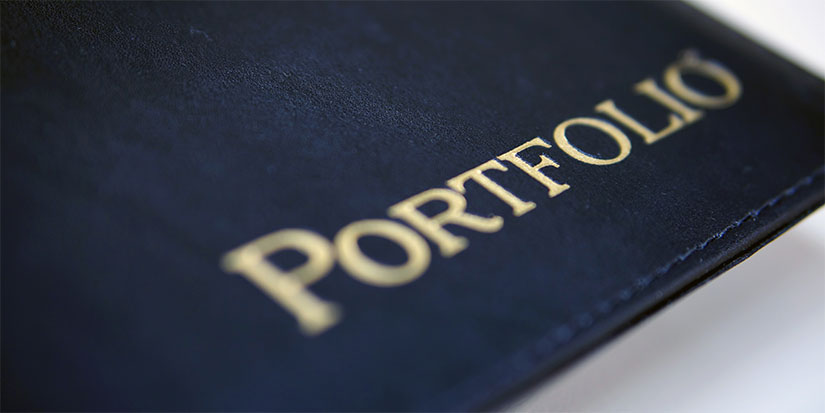
The Long-Awaited Correction
Last week may have been a surprise to most, but it was not a surprise to those who read my newsletters.
Build a Portfolio That Helps You Stay Invested
The pressure to create a strong portfolio that will support you as you approach retirement can be overwhelming. I’ve heard from many subscribers over the years who fear of making the wrong move with their investments, considering what’s at stake.
And I get it—because gone are the days when it’s enough to “just buy a couple of index funds.” There’s more to consider now, such as how to allocate your investments in the face of market crashes, geopolitical turmoil, inflation, and interest rates.
That’s why, if you’re serious about safeguarding your long-term wealth and financial stability, you need a portfolio that’s well-diversified, balanced for risk, and resilient against market fluctuations… no matter what challenges arise.
Volatility makes people make stupid decisions, but a well-diversified portfolio can help you remove the stress of investing without having to worry about the news cycle and frequent trading.
I believe in “set it and forget it” investing. A long-term investing strategy pivots only when necessary. And ultimately, it provides peace of mind.
The Right Risk-Reward Balance
People frequently target returns in their portfolios without putting any thought into risk. They get an idea in their heads of what they want their portfolios to return, so that’s what they target.
I think people have it completely backward. Instead of targeting returns in their portfolios, they should target risk, with returns being a secondary concern.
The whole idea of investing is that you construct a portfolio that you can hold through the ups and downs… and there will inevitably be downs.
Here’s what happens: People have a risky portfolio consisting of only growth stocks, they sustain a 40% drawdown, and it causes them so much stress that they are forced to liquidate it. Then the returns stop compounding.
Your goal is to build a portfolio that will help you stay invested. You could achieve this by constructing a portfolio with less-risky stocks. But they’re still stocks and subject to the same macro factors that affect all stocks.
Really, you need exposure to different asset classes that are less correlated or negatively correlated. That’s what reduces your risk.
It may also reduce your returns. But if you’re creative about it, it doesn’t have to.
Focus on These Five Investments
One main reason that people don’t diversify into other asset classes is that they don’t understand other asset classes.
-
Stocks are easy to understand. Stocks go up; stocks go down—not too hard. It’s a little more complicated than that, but for the time being, let’s assume that stocks are linear instruments.
-
Bonds are more complex. People don’t like to invest in things they don’t understand. When I was learning to invest, all I knew was that I had to have an allocation to bonds for diversification purposes and that bonds went down when interest rates went up.
-
Most people don’t think much about having an allocation to real estate in their portfolios, but they do anyway, through the equity in their own homes. For a lot of people, that is all the exposure to real estate that they need. If you need more, you can buy residential property, commercial property, or real estate investment trusts (REITs). Real estate presents liquidity challenges, and publicly traded REITs are an acceptable way to get exposure.
-
It’s also important to gain exposure to commodities, and it’s not that hard. Gold is one-stop shopping—an allocation to gold gives you your commodity exposure, which is one of the most proven ways to hedge your portfolio during times of uncertainty.
-
And, of course, no asset allocation discussion would be complete without mentioning cash. Cash is many things. Cash is optionality—it is the option to buy something cheaper in the future. Cash is an asset class in and of itself—it doesn’t return very much, but it is an asset class.
Put Them Together and You Get the Awesome Portfolio
What I’ve just described is the Awesome Portfolio. Over the last 50-odd years, it has pretty much returned the same as stocks but with half the volatility.
It works because it targets risk instead of returns. In fact, it doesn’t promise returns at all. What it does promise—and deliver—is a manageable level of risk.
It’s designed to let you stay invested and keep compounding in any kind of environment.
Remember, investing is all about psychology. If you can defeat your instinct to focus on returns over risk, you will succeed in boosting the former with far less of the latter.
Level Up Your Diversification
Let’s take it a step further: You can achieve proper diversification by leveraging one of the greatest financial innovations of the last 100 years: the exchange-traded fund (ETF).
ETFs burst onto the scene in the early ’90s and have since transformed the way people invest for the long term. I like them for their affordability, profit potential, and versatility.
Now, you might be wondering, “Aren't ETFs just another name for index funds?” The answer is a resounding “no!”
ETFs offer five distinct and powerful benefits to you as an investor:
-
ETFs have a lower cost of entry, making them affordable.
-
You can buy and sell ETFs at any time, just like stocks. Index funds, on the other hand, can only be sold at the end of the day, which limits your flexibility, especially during bear markets.
-
ETFs offer greater tax efficiency compared to both index funds and actively managed mutual funds.
-
The unique structure of ETFs allows you to maximize returns while minimizing long-term volatility. This is crucial because nobody should lie awake at night worrying about their portfolio taking a massive hit. You deserve a portfolio you can trust to perform well, even when the overall market experiences turbulence.
-
ETFs are the ideal tool for achieving diversification. They cover a wide range of asset classes, including commodities, real estate, foreign currencies, equities, bonds, and credit. By building an ETF-based portfolio, you can help you achieve true diversification without any overlap.
My Strategic Portfolio
Think of my Strategic Portfolio as an actively managed Awesome Portfolio. It centers around the same five asset classes—stocks, bonds, gold, real estate, and cash—with a focus on finding cost-effective ETF investments that offer the highest profit potential.
In other words, they won’t cost you much, but they have the potential to deliver substantial returns. That’s precisely what you want when constructing your long-term core portfolio.
I know that investing can often feel like a rollercoaster ride, but it doesn’t have to be that way.
That’s where the Strategic Portfolio comes in…
It takes away the stress of investing and gives you the information you need to build and maintain your own retirement portfolio.
You can learn more about it here. And as a bonus, when you subscribe to the Strategic Portfolio today, you get access to my Awesome Portfolio report for FREE.

Jared Dillian, MFA
|

We’re a Nation of Gamblers
The United States is the only place in the world where people routinely put the bulk of their savings in the stock market without knowing much, if anything, about how markets work.

Nobody Knows How Bonds Work
I began my investing journey at age 23. I got some pamphlet that said I should invest in some bonds to go with my stocks. I didn’t know what a bond was.

Infinity or Zero
You see this a lot in the markets: When people say they will hold an investment forever, they will either make infinity or zero.
